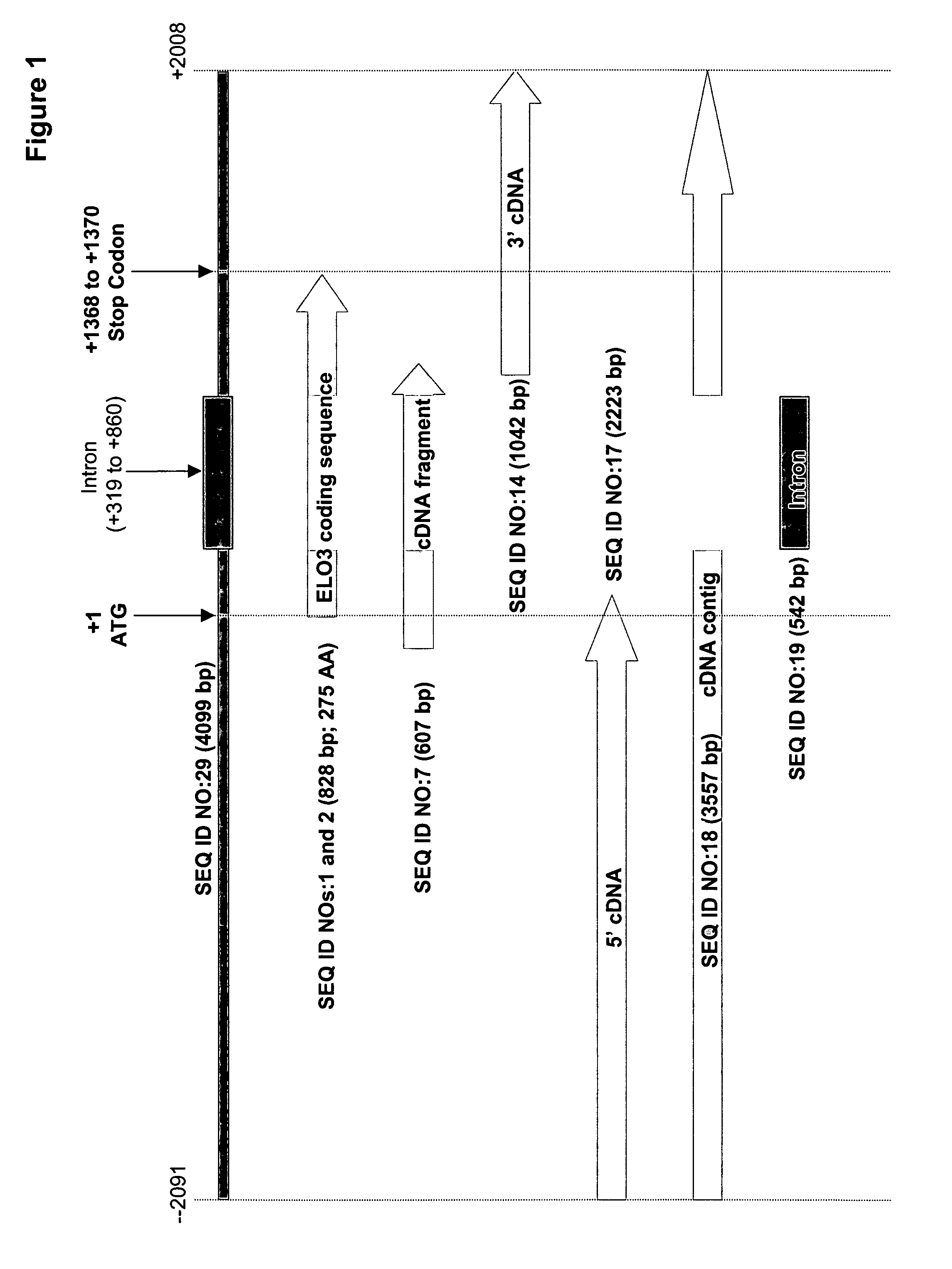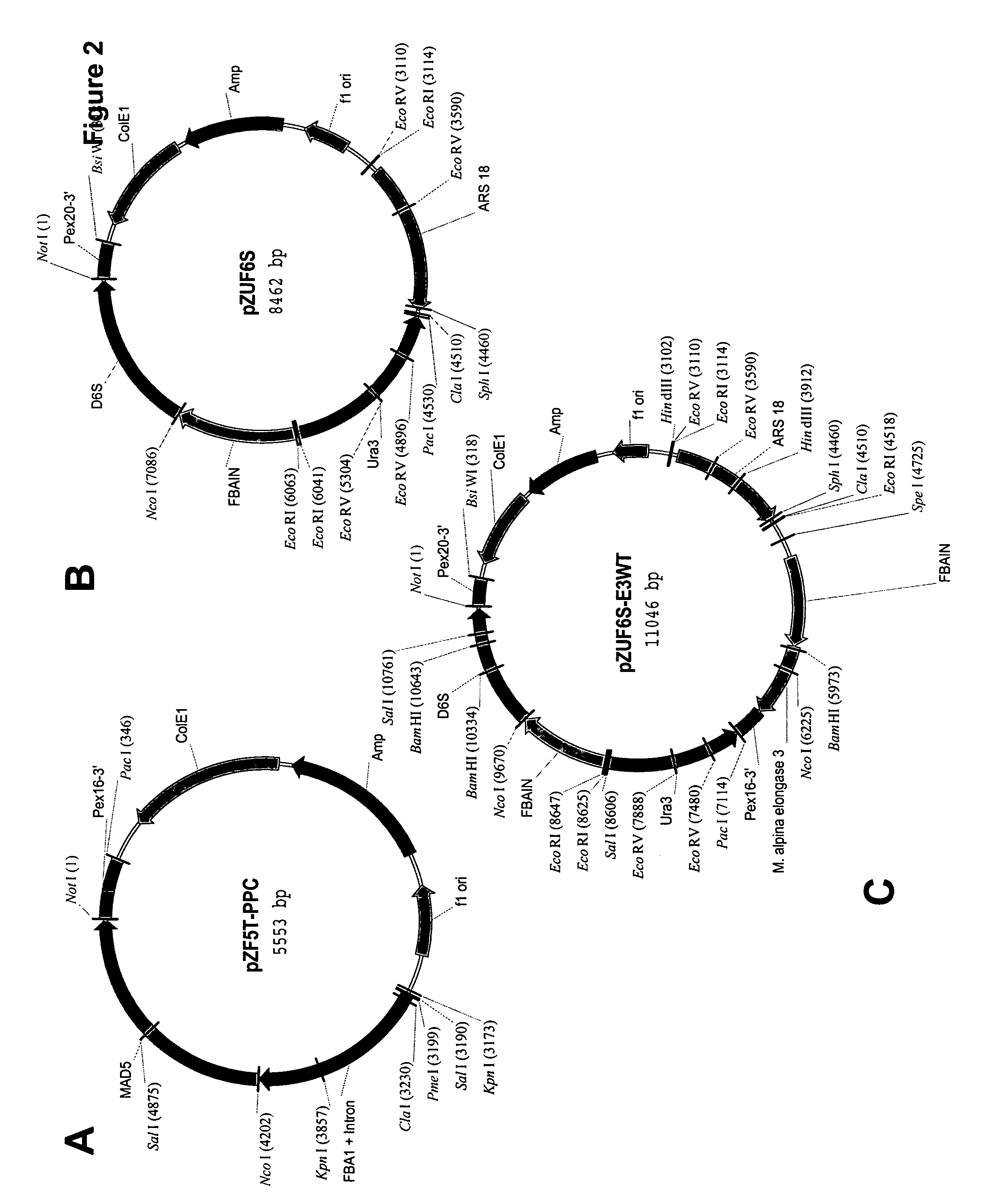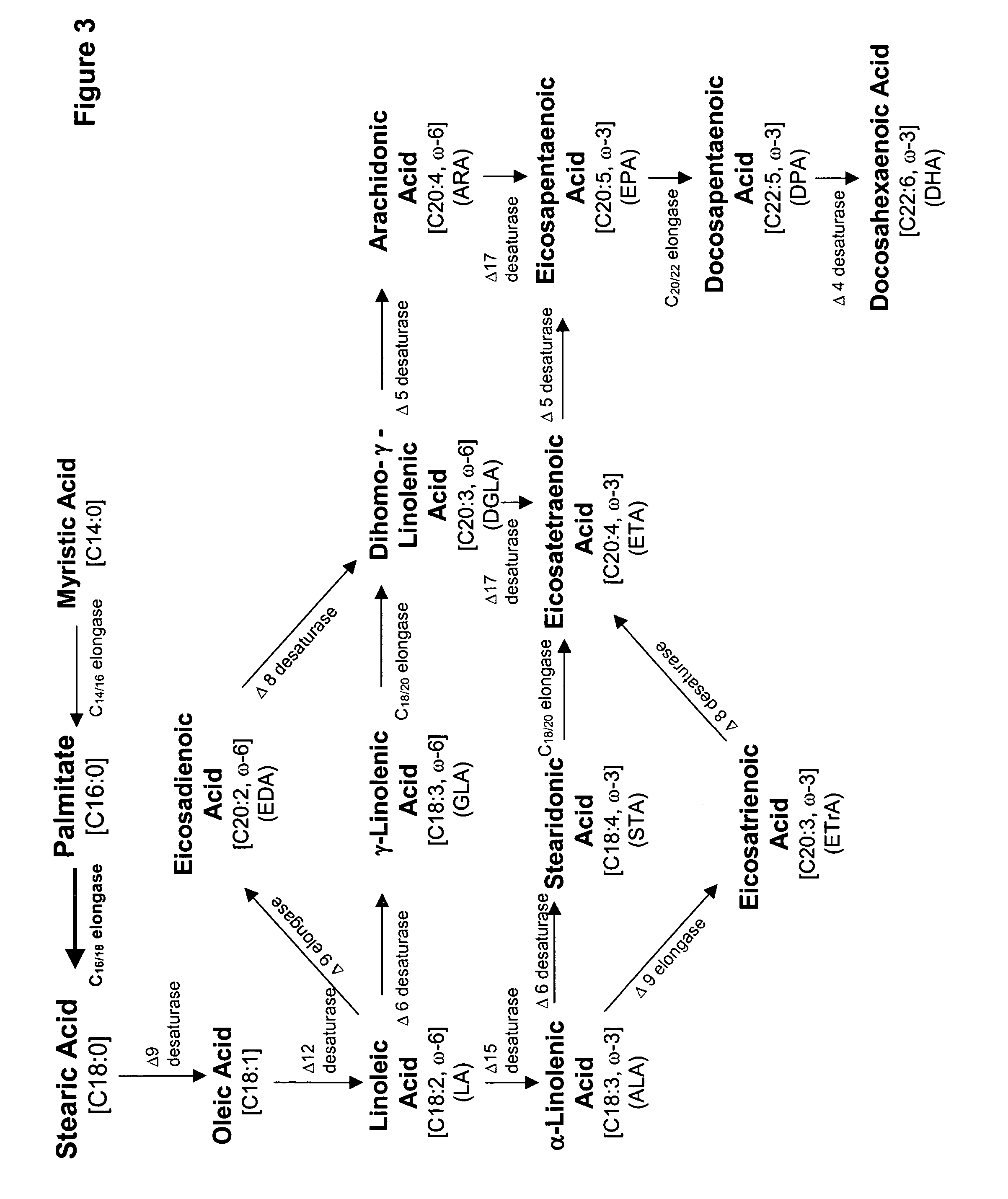Mortierella alpina C16/18 fatty acid elongase
a fatty acid elongase and mortierella alpina technology, applied in the field of biotechnology, can solve the problems that the similar manipulation of oil content in oleaginous microorganisms has not been significantly pursued in the past, and achieves the effects of increasing the conversion ratio of 16:0 to 18:0, increasing oil biosynthesis, and increasing the content of pufa
- Summary
- Abstract
- Description
- Claims
- Application Information
AI Technical Summary
Benefits of technology
Problems solved by technology
Method used
Image
Examples
example 1
Construction of a Mortierella alpina cDNA Library
[0149]The present Example describes the construction of a cDNA library of Mortierella alpina using the BD-Clontech Creator Smart® cDNA library kit (Mississauga, ON, Canada), according to the manufacturer's protocol.
[0150]Specifically, M. alpina strain ATCC #16266 was grown in 60 mL YPD medium (2% Bacto-yeast extract, 3% Bactor-peptone, 2% glucose) for 3 days at 23° C. Cells were pelleted by centrifugation at 3750 rpm in a Beckman GH3.8 rotor for 10 min and resuspended in 6×0.6 mL Trizole reagent (Invitrogen). Resuspended cells were transferred to six 2 mL screw cap tubes each containing 0.6 mL of 0.5 mm glass beads. The cells were homogenized at the HOMOGENIZE setting on a Biospec (Bartlesville, Okla.) mini bead beater for 2 min. The tubes were briefly spun to settle the beads. Liquid was transferred to 4 fresh 1.5 mL microfuge tubes and 0.2 mL chloroform / isoamyl alcohol (24:1) was added to each tube. The tubes were shaken by hand for...
example 2
Identification of a Partial Fatty Acid Elongase Sequence From Mortierella alpina
[0158]The present Example describes the identification of a cDNA fragment (SEQ ID NO:7) encoding a portion of a M. alpina fatty acid elongase, from among 9,984 cDNA sequences.
[0159]Identity of the sequence was determined by conducting BLAST (Basic Local Alignment Search Tool; Altschul, S. F., et al., J. Mol. Biol. 215:403-410 (1993)) searches of M. alpina cDNA sequences for similarity to sequences contained in the BLAST “nr” database (comprising all non-redundant GenBank CDS translations, sequences derived from the 3-dimensional structure Brookhaven Protein Data Bank, the SWISS-PROT protein sequence database, EMBL and DDBJ databases). cDNA sequences were translated in all reading frames and compared for similarity to all publicly available protein sequences contained in the “nr” database, using the BLASTX algorithm (Gish, W. and States, D. J. Nature Genetics 3:266-272 (1993)) provided by the NCBI. One c...
example 3
Sequencing of the Complete M. alpina ELO3
[0162]Analysis of the partial fatty acid elongase cDNA sequence (SEQ ID NO:7) indicated that the 5′ and 3′-ends were both incomplete. To obtain the missing regions, genome-walking techniques were utilized.
Genome Walking to Isolate the 3′-End Region of M. alpina ELO3
[0163]A Clontech Universal GenomeWalker™ kit was used to obtain a piece of genomic DNA corresponding to the 3′-end region of the M. alpina ELO3. Briefly, 2.5 μg each of M. alpina genomic DNA was digested with DraI, EcoRV, PvulI or StuI individually, the digested DNA samples were purified using Qiagen Qiaquick PCR purification kits and eluted with 30 μl each of kit buffer EB, and the purified samples were then ligated with Genome Walker adaptor (SEQ ID NOs:8 [top strand] and 9 [bottom strand]), as shown below:
[0164]
5′-GTAATACGACTCACTATAGGGCACGCGTGGTCGACGGCCCGGGCTGGT-3′3′-H2N-CCCGACCA-5′
Each ligation reaction mixture contained 1.9 μl of 25 μM Genome Walker adaptor, 1.6 μl 10× ligatio...
PUM
| Property | Measurement | Unit |
|---|---|---|
| temperature | aaaaa | aaaaa |
| temperature | aaaaa | aaaaa |
| temperature | aaaaa | aaaaa |
Abstract
Description
Claims
Application Information
 Login to View More
Login to View More - R&D
- Intellectual Property
- Life Sciences
- Materials
- Tech Scout
- Unparalleled Data Quality
- Higher Quality Content
- 60% Fewer Hallucinations
Browse by: Latest US Patents, China's latest patents, Technical Efficacy Thesaurus, Application Domain, Technology Topic, Popular Technical Reports.
© 2025 PatSnap. All rights reserved.Legal|Privacy policy|Modern Slavery Act Transparency Statement|Sitemap|About US| Contact US: help@patsnap.com



